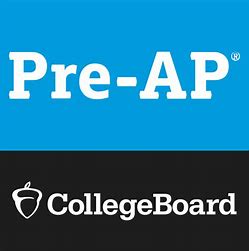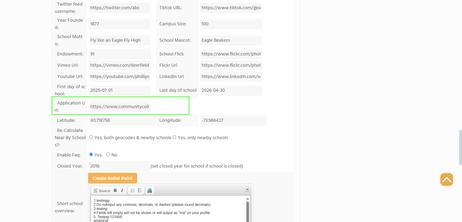Pre-AP, PSAT/NMSQT, BlueBook, and More
As one parent to another, understanding the College Board's programs is crucial for supporting your high schooler.
- It's not simply a matter of SAT prep, although that is one goal.
- The Pre-AP and PSAT offer you an opportunity to determine whether your child will succeed in college-level academic work or perhaps is better suited for a hands-on vocational or paraprofessional career path.
- Given that a college education costs from $4,000 to $68,000 per year, figuring out what happens after graduation makes good sense.
- The College Board offers a range of programs designed to help middle and high school students build the skills and confidence they need to succeed in college and beyond.
The College Board is a well-known, established organization that plays a significant role in preparing high school students for college through its various programs.
- One of the key ways the College Board does this is by helping students prepare for the SAT, a critical exam for college admissions.
- The College Board's programs are designed to be accessible and engaging for a variety of learning styles.
- By understanding these programs, parents can better support their children's high school education.
Here's an overview of these programs, together with explanations of how they provide some valuable insights into a student's abilities and skills.
Pre-AP Programs
The Pre-AP program is an excellent way for students to prepare for Advanced Placement (AP) courses.
- This introduction to AP courses is especially useful for students who might have struggled with some of the subjects that Advanced Placement will cover in great depth.
- Identifying gaps and weaknesses in a student's knowledge base is an important part of assessment.
- Since so much is riding on getting good scores in the AP exams, Pre-AP can be a useful tool for improving one's chances for success.
- Schools purchase the PreAP package, which includes planning templates and suggestions for implementing the program.
- Schools must complete a Pre-AP Course audit before implementing the program.

The Pre-AP curriculum
Pre-AP consists of twelve courses that mirror the courses commonly offered as Advanced Placement Courses.
English
Pre-AP English 1 & Pre-AP English 2
Math
Pre-AP Algebra 1m Pre-AP Algebra 2, & Pre-AP Geometry with Statistics
Science
Pre-AP Biology &Pre-AP Chemistry
World History and Geography
Pre-AP World History and Geography
Arts
Pre-AP Visual and Performing Arts (includes options for 2-D Art and Design, 3-D Art and Design, and Drawing)
Course Delivery
Students learn differently for many reasons. As a result, the College Board offers online and other digital resources for its Pre-AP curriculum that allow students to learn materials in the manner they find most natural and at their own pace.
- For example, teachers can use digital tools to share assignments, provide feedback, and engage students in discussions.
- By leveraging technology, Pre-AP programs can offer personalized learning experiences that cater to different learning styles.
You can support their children in these programs by staying updated through digital communication tools, such as email newsletters and online portals.
- You can also encourage good study habits and improve your child's concentration by providing a quiet place for your child to work.
- Make sure your child works without music or TV playing. Show her how to emulate the test day environment.
- The Pre-AP Classroom keeps parents informed about their child's progress and upcoming assignments.
"What is a pre-AP class? Pre-AP classes are a fairly new term for classes that are meant to prepare high school students for AP classes (college-level classes taken in high school) as well as college classes themselves. Pre-AP classes are typically taken by high school freshman, but some courses are also meant for sophomores." Source: PrepScholar
PSAT Suite of Assessments
Just as the Pre-AP curriculum offers junior high school students the opportunity to experience an introduction to Advanced Placement courses and the serious academic work they involve, the PSAT offers the opportunity to become familiar with the popular standardized admissions test known as the SAT.
PSAT/NMSQT
The PSAT/NMSQT or Preliminary Scholastic Aptitude Test and National Merit Scholarship Qualifying Test are taken by juniors (11th grade) in high school. They are foundational steps in preparing for the actual SAT (Scholastic Aptitude Test).
- High school seniors typically take the SAT during the fall of their senior year, specifically in October, November, or December, depending on college application deadlines.
- For students applying via Early Action or Early Decision, the latest recommended test date is November, while those applying Regular Decision can take the SAT as late as December.
PSAT/NMSQT also serves as the qualifying test for the National Merit Scholarship Program, which recognizes high-achieving students.
- The PSAT/NMSQT uses digital scoring and reporting tools, providing immediate feedback on students' performance.
- This feedback is invaluable, as it is immediate.
- This helps students identify areas where they need to improve.
- Making the PSAT/NMSQT Suite part of a school's curriculum builds confidence in taking standardized tests.

While American students are accustomed to taking standardized tests, so much is riding on the SAT and its role in college admissions that lots of practice preparing for the PSAT family of tests will pay off when students take the SAT.
- Assist your children by encouraging them to use online study guides and resources to prepare for the test.
- Help their children interpret their scores by accessing online portals that provide detailed reports on their strengths and weaknesses.
- Share your experiences preparing for and taking the PSAT and SAT tests.
- While the #2 pencils and score sheets are a thing of the past, the concepts remain the same.
PSAT 10 & PSAT 8/9
The PSAT comes in 2 versions: PSAT 8/9 and PSAT 10.
PSAT 10
The PSAT 10 is similar to the PSAT/NMSQT but is typically taken by sophomores.
- It focuses on assessing skills in reading, writing, and math, using digital testing platforms.
- Support your sophomore by helping him access online practice materials.
- These resources can help students become confident test-takers.
PSAT 8/9
The PSAT 8/9 is designed for students in eighth or ninth grade.
- It's an early assessment tool that helps students develop skills and identify areas where they need improvement.
- Preparing for the PSAT 8/9 can help young teenagers find themselves.
- Indeed, it can help students determine their future studies and career paths.
A Fork in the Road
Think of this period of study as a fork in the road. Should she take a purely academic track? Is she better suited for some kind of hands-on paraprofessional or vocational training?
- High performance on the PSAT 8/9 can signal readiness for more rigorous academic work, including honors, Advanced Placement (AP), or International Baccalaureate (IB) programs.
- The PSAT can help students and families plan for a college-preparatory curriculum.
Alternatively, the PSAT 8/9 results can guide them toward career and technical education programs, vocational training, or paraprofessional certification tracks. This decision-making opportunity is even more critical in the era of AI-powered apps. After all, an AI-powered app will only enhance a dental hygienist's or welder's work. It won't replace them.
- At this inflection point, an informed guidance counselor should be available to review PSAT 8/9, both practice and final test results, and offer suggestions for the way forward.
- Making a well-considered decision at this stage of a child's development will better position her for working in a fast-changing AI-powered world.
Parents should encourage their children to view the PSAT Suite of tests as an inflection point.
- It's difficult for most young people to think ahead even a few minutes, much less a few years.
- So, a parent discussing career paths in this rapidly changing world will be beneficial.
- When those discussions uncover a passion for the arts, for science, or programming, run with it.
- Support it. Encourage it. When the discussions reinforce a child's passion for a sport, go for it.
Remember that the career paths you and I followed have been drastically transformed.
- Keep an open mind as your teenager talks about her dream of doing something that's only been around a couple of years.
- That's how Microsoft, Google, Facebook, and so many other enterprises got started.
- They are the products of someone's dream.
This video from the College Board explains the PSAT 8/9.
Bluebook
Bluebook is the College Board’s digital testing application used for the SAT, PSAT/NMSQT, PSAT 10, PSAT 8/9, and digital AP Exams.
- Students use Bluebook to practice, complete exam setup, access their admission ticket, and take the actual exams on test day.
- The app offers built-in tools like a calculator, annotation features, and practice tests to help students familiarize themselves with the digital format.
Conclusion
While the College Board's programs are designed to prepare middle and high school students for the SAT by building their skills and confidence, they also offer an opportunity to review future career paths that will be impacted by Artificial Intelligence (AI).
- AI is undeniably reshaping traditional career paths, much like the automobile made buggy whips obsolete.
- However, it's not a binary replacement but a transformative force.
- AI automates repetitive tasks while elevating demand for human skills like creativity, ethics, and emotional intelligence.
- The challenge lies in reskilling workforces to thrive alongside AI, not against it.
Questions? Contact us on Facebook or Instagram. @privateschoolreview
#privateschools #SATPrep #CollegeBoard #PSAT #KhanAcademy #PreAP #ParentingTips















